Root Awakening: Coffee and peanut plants infested, sunburnt Monstera and more
Sign up now: Get ST's newsletters delivered to your inbox
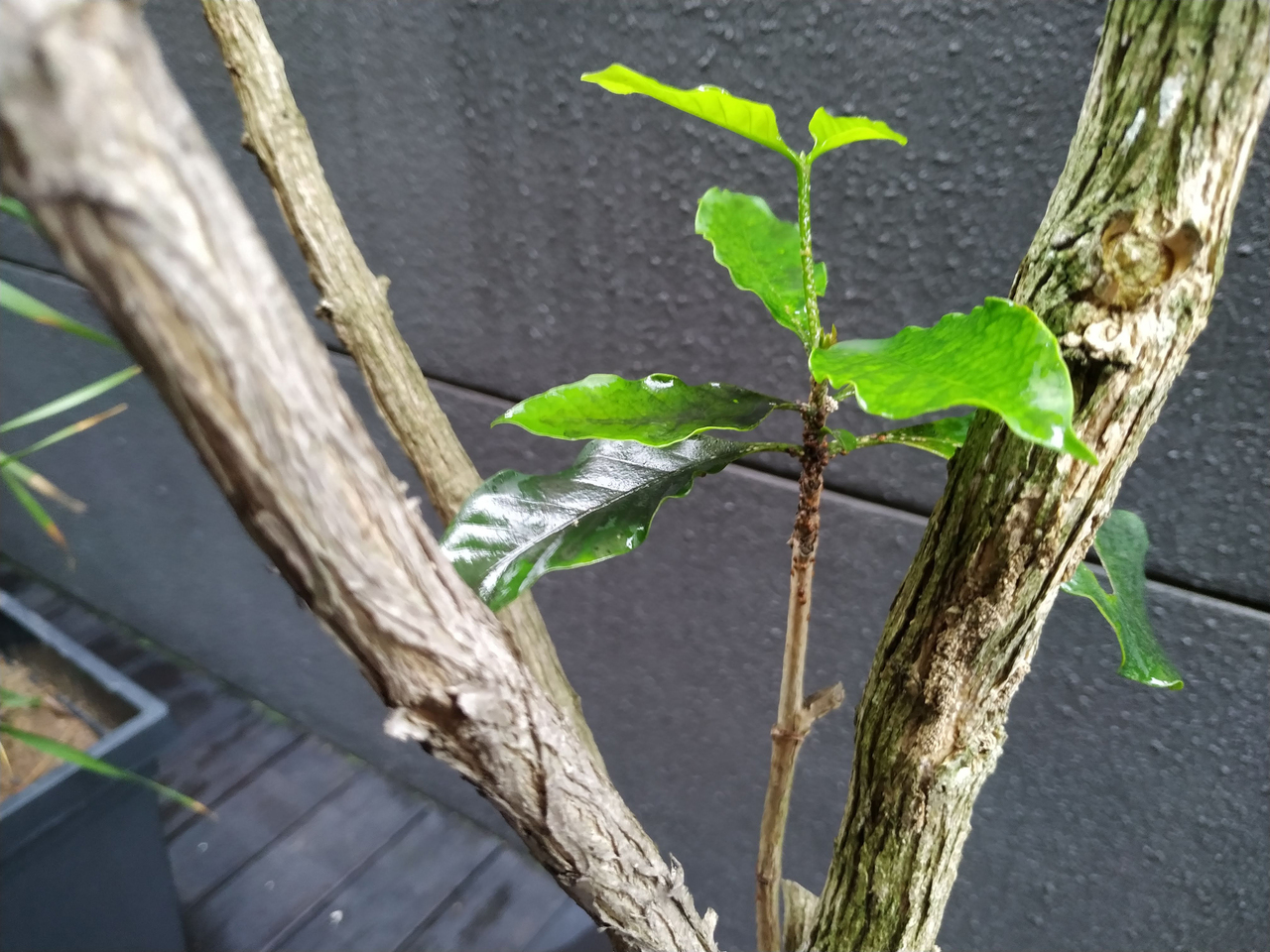
Apply environmentally friendly, low-toxicity pesticides such as summer oil or neem oil on all parts of the plant to suffocate the scale insects.
PHOTO: DAWN FOO
Follow topic:
Coffee plant infested with scale insects
My coffee plant (above) seems to be infested with pests. I see egg-like clusters on the branches and the leaves are turning brown. What can I do to save my plants? Chopping off the affected areas does not seem to stop the spread.
Dawn Foo
The shiny brown bumps on your coffee plant are scale insects. These armoured pests suck sap from your plants, which will weaken them over time. Try using a soft paintbrush to remove the insects.
Apply environmentally friendly, low-toxicity pesticides such as summer oil or neem oil - which are available for sale in nurseries - on all parts of the plant. These pesticides work by suffocating the scale insects. Thorough coverage and repeated applications are required to keep the pest population low.
Bittergourd fruit not developing due to pollination issues
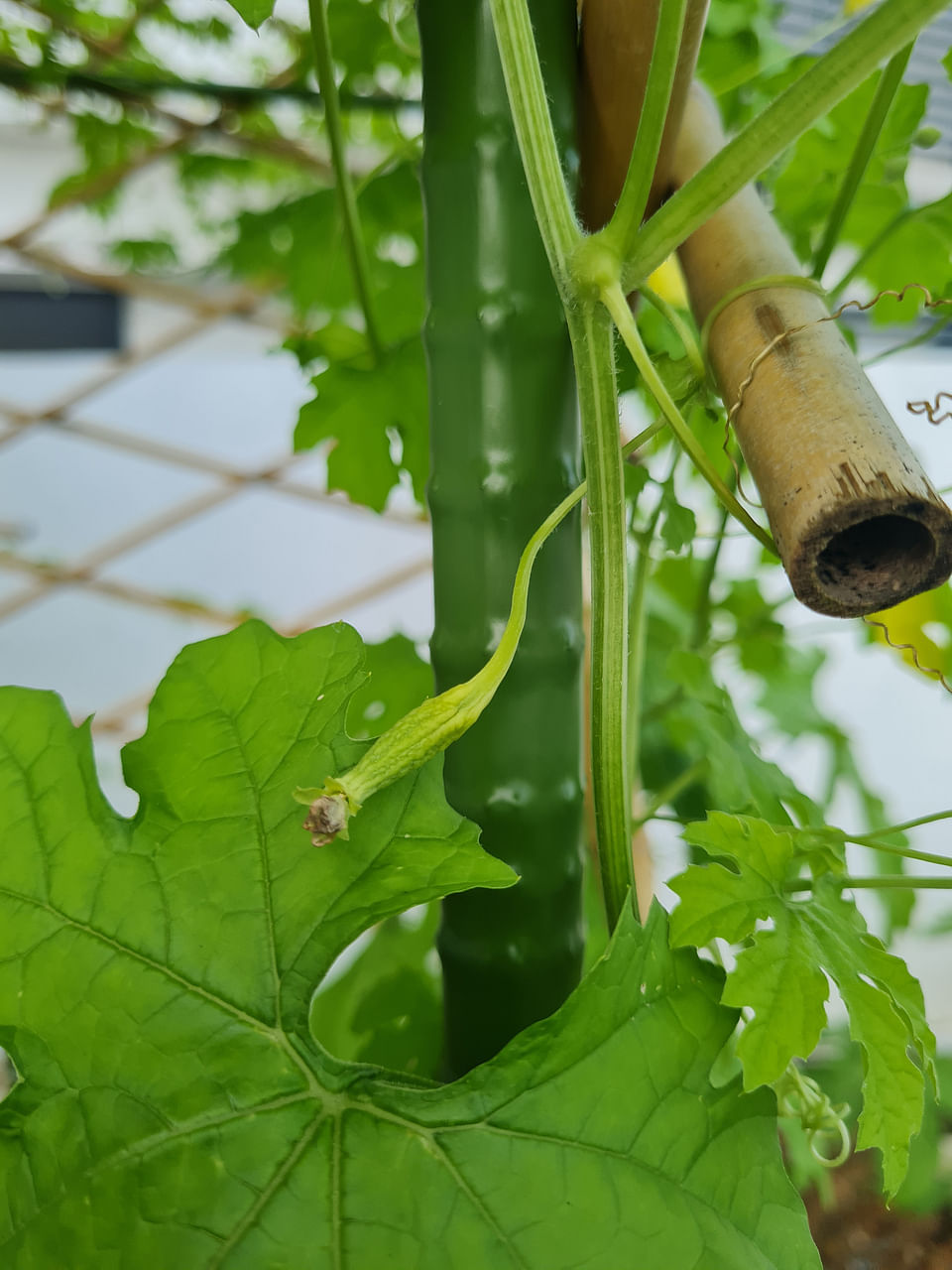
root19-ol - bittergourd - stephanie yau hoon lee
PHOTO: stephanie yau hoon lee
Why do the fruit of my bittergourd turn yellow and drop? I fertilise the plant with organic fertiliser once a month.
Stephanie Yau Hoon Lee
The lack of fruit development in your bittergourd could be due to the lack of pollination. You may want to perform hand pollination to help with fruit production.
Bittergourd plants produce male and female flowers. Male flowers can be identified by the lack of an ovary behind the petals. You can use a paintbrush to pick up some pollen from the centre of freshly opened male flowers and transfer them to the centre of a female flower.
You should also try to attract pollinators by planting nectar-rich flowering plants, such as basil. Bees are important to an edible garden as they can help pollinate the flowers of your fruited vegetables. Also, reduce your use of harmful chemical pesticides, as they can reduce your garden's population of beneficial fauna.
Monstera leaves look sunburnt
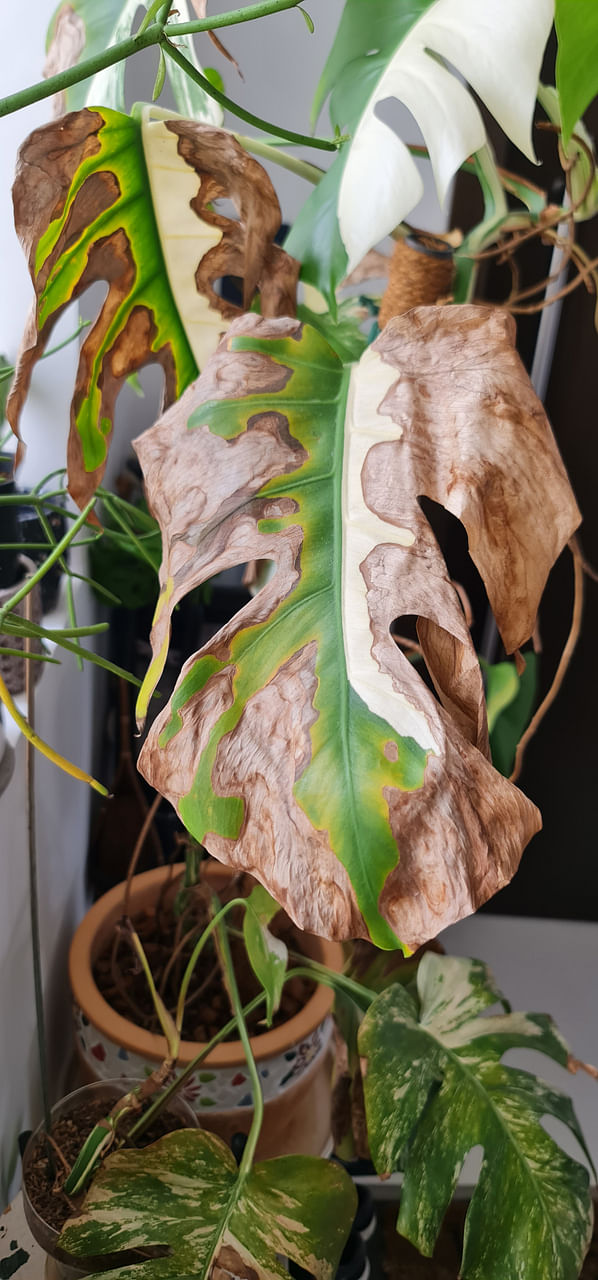
root19-ol - monstera - Yuankai Ng
PHOTO: Yuankai Ng
We have had this Monstera for about three years. We bought it when it had only two leaves and it grew well until six months ago. The white portions of the leaves have since been turning brown rapidly. New leaves quickly turn brown as well.
The plant is just outside our apartment, where it receives partial indirect sunlight in the day and fluorescent light at night. We even changed the soil, but it has not worked. How can we save our plant?
Yuankai Ng
Your Monstera leaves seem to be badly sunburnt. Check the intensity of the sunlight that it receives, as the direction of sunlight changes over the course of the year.
This plant generally fares better with filtered sunlight. There is a new leaf at the top right side of your picture that looks normal - it could have adapted to the current growing conditions.
The less damaged leaves could have been produced at an earlier stage under shadier conditions, thus rendering them more vulnerable to damage under more intense light. These can be pruned away.
Also, place your plant in a location which has ample air circulation and do not over-fertilise it, as the excessive salts can burn your plant.
Peanut plant infested with spider mites
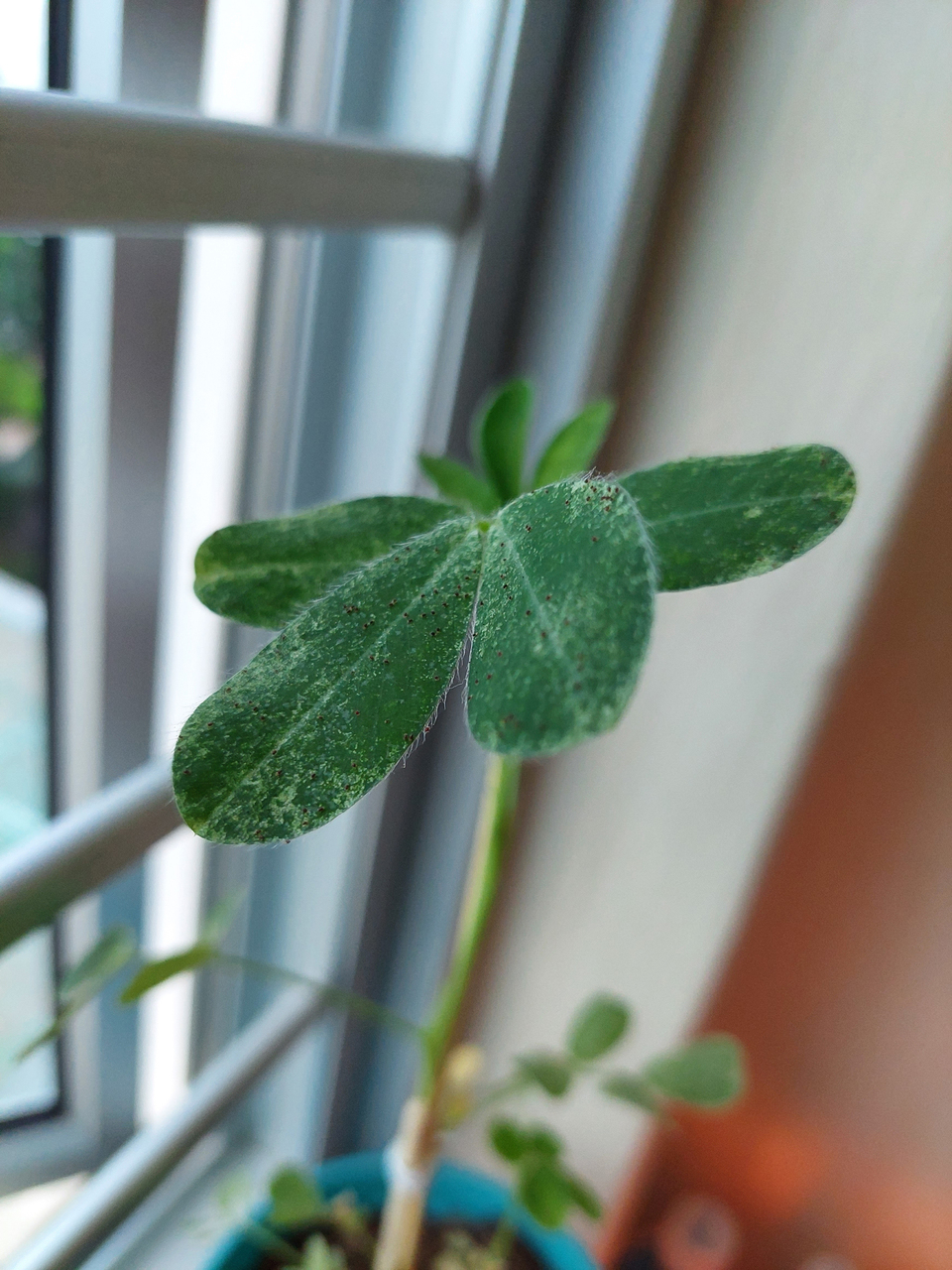
root19-ol - peanut plant -peanut plant - Foong Yin Wong
PHOTO: peanut plant - Foong Yin Wong
There are black spots on the leaves of my peanut plant. What are these spots and how can I get rid of them?
Foong Yin Wong
Your peanut plant seems to have been attacked by spider mites. They appear as small, red dots that move around. Their feeding habit results in small yellow specks on a plant's leaves.
Spider mites can be difficult to eradicate, especially if your plant is stressed by suboptimal growth conditions. Peanut plants need to be grown in a sunny spot which receives at least four hours of direct sunlight a day.
You can wash the leaves to reduce the initial pest load. Then, spray summer oil, which is an organic pesticide that works by suffocating pests. Repeated applications over several days are required to keep the pest population under control. You can rotate it with castile soap solution or pyrethrin pesticide. Spray plants during the cooler times of the day to reduce damage to the leaves.
Simpoh air is native to Singapore
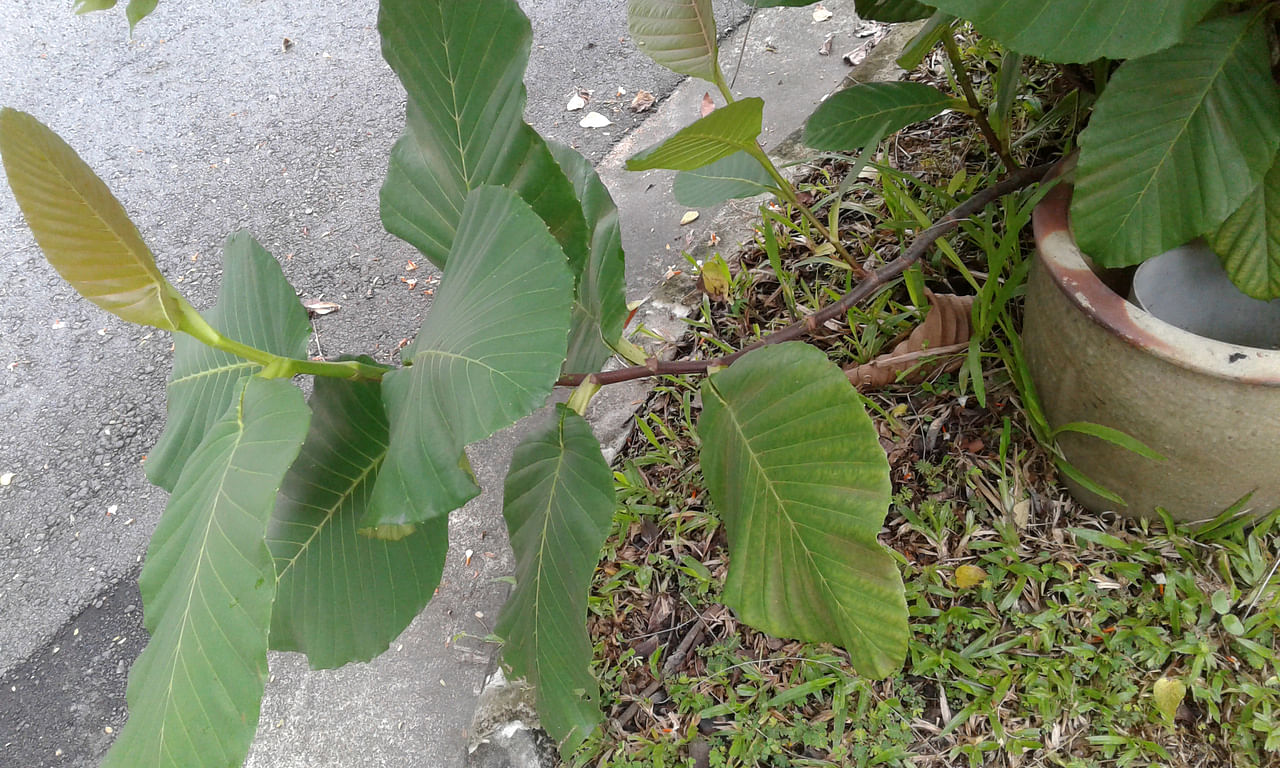
<p>root19-ol - simpoh air - Jayam Nara</p>
PHOTO: Jayam Nara
I noticed this plant when it was much smaller and growing outside my home in Seletar Hills Estate. It had large, fleshy leaves which seemed to be anchored to the stem. Now it is about 1.52m tall. What is its name and what does it mean for the area?
Jayam Nara
The plant is botanically known as Dillenia suffruticosa. It is a native plant of Singapore, and its common names are the Simpoh Air and Shrubby Simpoh.
It can eventually grow into a large shrub or small tree. You may want to prune it regularly to prevent it from obstructing users of the pathway or creating a blind spot for motorists.
Its large leaves are used to wrap food such as tempeh and were traditionally formed into shallow cones to contain food such as rojak.
- Answers by Dr Wilson Wong, an NParks-certified practising horticulturist, parks manager and ISA-certified arborist. He is the founder of Green Culture Singapore and an adjunct assistant professor (Food Science & Technology) at the National University of Singapore.
- Have a gardening query? E-mail it with clear, high-resolution pictures of at least 1MB, if any, and your full name to stlife@sph.com.sg. We reserve the right to edit and reject questions.

